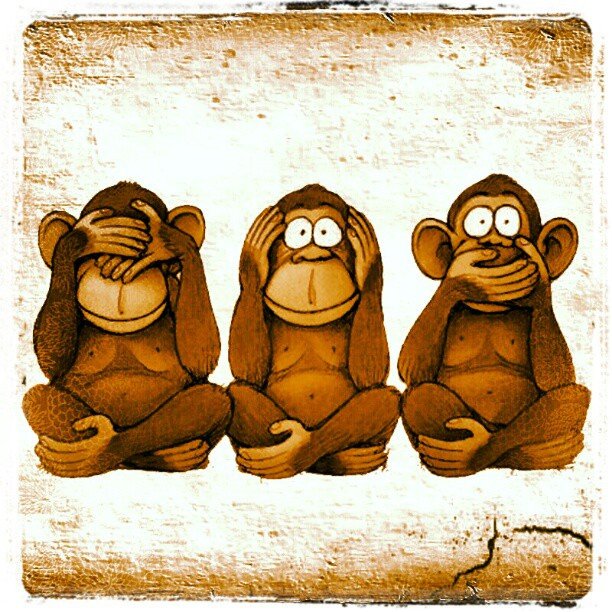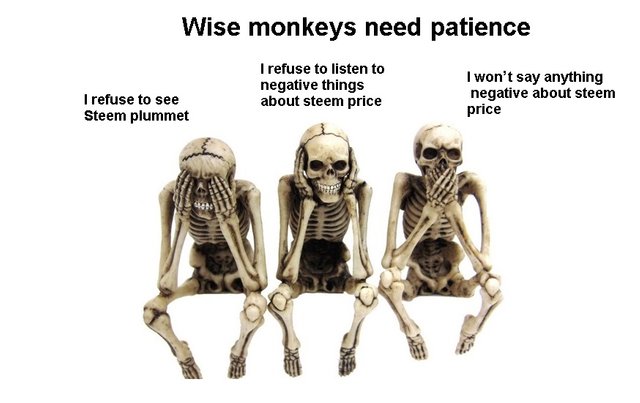What is the meaning of the figure of the 3 wise monkeys according to my point of view?
Hello friends, almost everyone has seen the representation of the three wise monkeys. It contains the figures of a monkey that covers its mouth, another that covers its ears and one that covers its eyes. It is a wooden sculpture that dates from the eighteenth century and basically alludes to good living, in the broad sense of the term.
Everything seems to indicate that the sculpture was inspired by a maxim of Confucius. This maxim states: "Do not see the evil, do not listen to the evil, do not say badly." So the basic sense is not to close completely to the world, but to refuse to come into contact with evil. This is part of the art of good living.
The teaching of Confucius and the three monkeys

But does this make sense? The first thing that comes to mind is that we can refuse to see, hear or speak of evil, but it is not going to disappear from the world. However, we could ask ourselves another question: What does knowing or talking about evil contribute to life?
There is a paranoid area of ourselves that takes pleasure in that contact with evil. We may say that being aware of the wickedness of the world protects us from that threat which is evil itself. For example, if you know that in a certain street there are many assaults, this would allow you to avoid it, thus decreasing the risk of falling.
It seems logical, but deep down it is not so much. First, because evil is the exception and not the norm in the world. It is true that we all have a destructive facet, but the usual thing is that this does not reach to be classified as evil. There are many more who live honestly and constructively.
Second, it is proven that being nervous and tense is one of the factors that raiders evaluate before attacking someone. The same could be said for other similar examples. In other words, victimizers and victims share common codes.
The liking for bad and good living
If we can live without knowing what the latest advances in quantum physics are, why can not we live without knowing about the perverse acts in the world? Here we should also note that there are reasons to think that witnessing cruel acts, personally or on television, increases either our destructiveness or our potential victimization.
It has to do with mirror neurons. The brain is not always able to distinguish reality from fantasy. That's why we get scared with horror movies. We know perfectly well that they are a fiction and, even so, unleash concrete emotions in us.
Therefore, seeing, hearing or speaking of evil could have a very toxic effect on ourselves. It is possible that this feeds the monster of fear or the monster of the evil within us. They are both there and can grow if we nourish them. So Confucius maybe he was right.
Mental hygiene
The sculpture of the three monkeys is a guide for good living and a basic principle of mental hygiene. Watching, hearing or talking about evil is something that could lead to a state of anguish. Suddenly we forget that statistically and mathematically there are more good people than bad people in the world. Instead, we believe the opposite: we feel that we are in a reality in which
something very bad could happen to us, at any time.
Many will ask: what if we really are victims of real evil? In that case, the Confucius approach remains valid. What is conducive there is to work on that experience in order to dilute it and separate it from us. Prevent it from becoming an axis on which our lives gravitate.
conclusion
The scandalous, the perverse and the cruel are subjects that sell. All this is part of a kind of pain pornography, which terrifies and fascinates the human being at the same time. That terror and fascination are neurotic. The art of living well has to do with working on the perspective from which we approach the world. And in that sense, the decision to refuse to be witnesses or diffusers of acts of evil has a great validity.
Thank you friend, this is all for today I hope to see you in my next publication.
Follow me | Upvote | Resteem
©All right reserved author
@joelgonz1982

not really relevant too much - I had just had this meme pop into my head while reading your post!

Hahaha These wise people had a lot of patience.